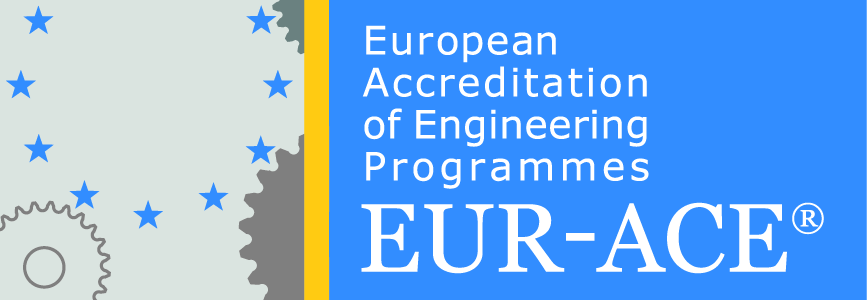|
1. |
Course Title | Data Science and Machine Learning | |||||||||||||
| 2. | Code | 4ФЕИТ07001A | |||||||||||||
| 3. | Study program | Dedicated Embedded Computer Systems and Internet of Things | |||||||||||||
| 4. | Organizer of the study program (unit, institute, department) | Faculty of Electrical Engineering and Information Technologies
Ss. Cyril and Methodius University in Skopje |
|||||||||||||
| 5. | Degree (first, second, third cycle) | Second cycle | |||||||||||||
| 6. | Academic year/semester | Year | I | Semester | 1 | ||||||||||
| 7. | Workload measured by number of ECTS credits | 6 | |||||||||||||
| 8. | Lecturer (in case of several lecturers to note the responsible one) | Dr. Hristijan Gjoreski | |||||||||||||
| 9. | Language of teaching | Macedonian and English | |||||||||||||
| 10. | Course prerequisites | None | |||||||||||||
| 11. | Course goals (acquired competencies) and study results:
Deepening knowledge in the field of Data Science and Machine Learning. This course provides practical usage of advanced tools and software for data processing, development of machine learning models, evaluation, and result comparison. |
||||||||||||||
| 12. | Course syllabus (with chapters) and study results for each chapter:
Chapter 1: Study of Data Science and Data Analysis with Machine Learning Algorithms Explore the fundamentals of data science and analysis in Chapter 1. Understand the key concepts shaping these fields and the role of machine learning algorithms in extracting insights from large datasets. Gain a foundational understanding, laying the groundwork for practical applications. Chapter 2: Working with Datasets and Application of Machine Learning Algorithms Immerse yourself in the practical side of data science in Chapter 2. Learn to handle datasets, prepare them, and apply machine learning algorithms, including Decision Trees, Naive Bayes, SVM, Random Forests, Ensemble models, and XGBoost. Acquire hands-on skills for deeper exploration. Chapter 3: Building Classification and Regression Models, Clustering, and Visualization Move beyond basics in Chapter 3. Construct classification and regression models, explore clustering techniques, and understand data and model visualization. Set the stage for analyzing and comparing different model evaluation techniques with practical proficiency. Chapter 4: Implementation and Evaluation Using Java or Python Environment In the final chapter, dive into practical implementation and evaluation of algorithms and models, whether using Java or Python. Equip yourself with skills to bring learning to life and assess the performance and effectiveness of developed models in real-world scenarios. Gain hands-on experience in implementing machine learning algorithms. |
||||||||||||||
| 13. | Interconnection of Courses:
As the basic course introducing g concepts of data science and machine learning, this course is coupled with the course Numerical Methods in Stochastic Processes, whose concepts are used here. Additionally, this course is further developed in the course Ambient Intelligence and Smart Devices, where the introduced concepts are being studied in detail for a specialized application area. Data Warehouse and Purpose-built Data is also tightly connected to this course. |
||||||||||||||
| 14. | Detailed description of teaching and work methods:
Lectures, independent work on project tasks and preparation of seminar work. |
||||||||||||||
| 15. | Total number of course hours | 180 | |||||||||||||
| 16.
|
Forms of teaching | 16.1 | Lectures-theoretical teaching | 45 hours | |||||||||||
| 16.2 | Exercises (laboratory, practice classes), seminars, teamwork | 45 hours | |||||||||||||
| 16.3 | Practical work (hours): | 15 hours | |||||||||||||
| 17.
|
Other courseactivities | 17.1 | Projects, seminar papers | 30 hours | |||||||||||
| 17.2 | Individual tasks | 30 hours | |||||||||||||
| 17.3 | Homework and self-learning | 15 hours | |||||||||||||
| 18. | Conditions for acquiring teacher’s signature and for taking final exam:
Regular attendance on lectures and consultations. |
||||||||||||||
| 19. | Grading | ||||||||||||||
| 19.1 | Quizzes | 0 points | |||||||||||||
| 19.2 | Seminar work/project (presentation: written and oral) | 50 points | |||||||||||||
| 19.3 | Final exam | 50 points | |||||||||||||
| 20. | Grading criteria (points) | up to 50 points | 5 (five) (F) | ||||||||||||
| from 51 to 60 points | 6 (six) (E) | ||||||||||||||
| from 61 to 70 points | 7 (seven) (D) | ||||||||||||||
| from 71 to 80 points | 8 (eight) (C) | ||||||||||||||
| from 81 to 90 points | 9 (nine) (B) | ||||||||||||||
| from 91 to 100 points | 10 (ten) (A) | ||||||||||||||
| 21. | Method of monitoring of teaching quality | Self-evaluation and student surveys | |||||||||||||
| 22. | Literature | ||||||||||||||
| 22.1. | Required Literature | ||||||||||||||
| No. | Author | Title | Publisher | Year | |||||||||||
| 1. | Aurélien Géron | Hands-On Machine Learning with Scikit-Learn and TensorFlow | O’Reilly Media; 1st edition (April 25, 2017) | 2017 | |||||||||||



